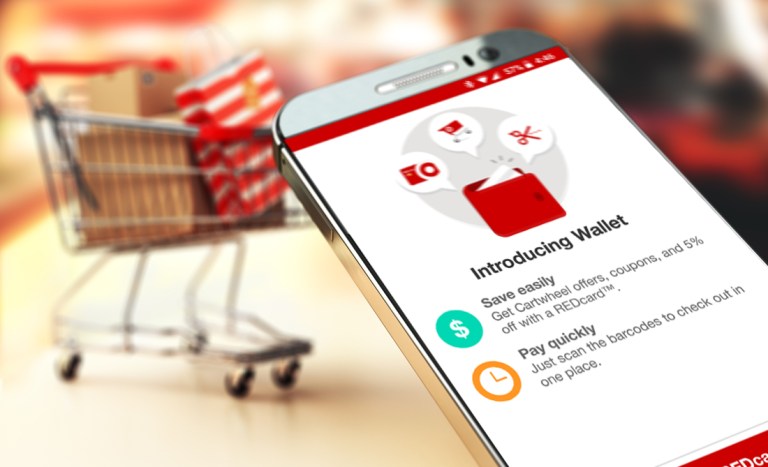For a minute, it seemed as though the proliferation of “Pays” was slowing down. Until recently, there was a tidal wave of Pays out to conquer digital with the power of mobile payments. Apple Pay, Android Pay, Samsung Pay, Chase Pay, Walmart Pay, Kohl’s Pay, Citi Pay, CVS Pay, Amazon Pay – over the course of about 36 months, the world went from having no “Pays” (well, except for PayPal) to a Pay for every day of the week.
But for the last year or so – since CVS Pay was introduced to the world – the Pay mania has quieted down. That may have something to do with the fact that the vastly expanded payments services providers have almost all found out that it is a lot easier to launch a mobile payments scheme than it is to actually ignite it.
Walmart Pay is the rare exception. Since its foray into the market about 18 months ago, it has managed to hit the adoption rate that Apple Pay has struggled to maintain after three. The rest of the field lags, and by a lot.
But despite those struggles, this week, a new Pay was born: Target Pay.
Okay, in fairness, Target isn’t actually calling it Target Pay. Daring to be different, Target is instead titling its mobile payment service – now an official part of the Target app – Target Wallet.
“Wallet in the Target app makes checkout easier and faster than ever,” said Mike McNamara, Target’s chief information and digital officer. “Guests are going to love the convenience of having payment, Cartwheel offers, Weekly Ad coupons and Gift Cards all in one place with Wallet.”
Advertisement: Scroll to Continue
So how does it work, and how will it stack up against the other Pay offerings?
Target Pay
Mobile payments by Target sounds a lot like Walmart Pay, in spirit. Users are able to shop and check out in-store using their smartphones, at the same taking advantage of their Cartwheel digital coupons and discounts with a single scan of their barcode.
This should be somewhat familiar to anyone who uses the Cartwheel savings feature in the Target app, as the software already allowed users to add discounts on select products and then scan a barcode at checkout for a discount.
But now, users can also use the Wallet feature in the app to scan a barcode and pay.
Provided they have a Target REDCard, that is. Taking a page from Kohl’s’ book, Target’s in-store mobile payments product only works with the store card, which in Q3 2017 accounted for 24.7 percent of Target sales. The REDCard acts as both a store-branded debit (linked to customers’ bank accounts) or credit card, and offers shoppers 5 percent cash back when used in Target stores. And then there are the favorable economics that go along with it. Obviously, Target would like to use the lure of a mobile wallet to build its REDCard base, and for those REDCard holders to spend more when they shop there.
To use the Target Wallet feature, users upload their REDCard, scan their Cartwheel discount barcode, scan the payments barcode and await their digital receipt. According to Target, testing of the new payment platform indicates that it is up to four times faster than paying with other methods.
Target Wallet can also be used to pay in app, though shoppers can already use Apple Pay within the Target app on iOS.
Will It Work?
The REDCard-only requirement is a limit – similar to the one Kohl’s Pay uses for its system, which only accepts that store-branded card – and one that is risky in a world where consumer adoption of mobile payment platforms is already something of an uphill climb.
But Target has reason to want to recruit more REDCard customers – who, according to the retailer’s internal data, spend 50 percent more on average than their non-card-carrying counterparts. Moreover, Target has noted that it intends to branch out from the REDCard for its mobile wallet. Gift cards will be added by early 2017, according to some reports – and network-branded cards are on the agenda for the future, though Target has not been specific as to when.
Still, early days are often a good time to enlist users, and other than already dedicated RED carders, it is hard to know if a mobile payment scheme – which still makes users do essentially the same thing at the PoS that they’ve always done – will be exciting to regular customers, particularly if they have to enroll in a specific card to leverage it.
By comparison, Target’s main competitor, Walmart, allows any network-branded card in its wallet, as well as its store-branded card and Walmart gift cards. It even lets users load cash and then use it to shop online or in-store on their mobile phones.
And that’s just table stakes on how Walmart and the rest of the “Pay” players are working to fan that dim spark of customer enthusiasm for mobile payments in the U.S.
Around The Ecosystem With Many Pays
Walmart, notably, is also pushing the use of its in-store card via its mobile wallet – they are just doing it in a way that is also intended to boost Walmart Pay usage among its cardholders. The Walmart card is normally worth 1 percent cash back for purchases in store – but for November and December, customers who link their store-branded cards to their Walmart Pay account and use them to pay in-store will get 3 percent cash back instead (the normal cash back rate for online purchases made with the Walmart card).
Moreover, as Karen Webster noted in a recent column, Walmart has tied payments to a whole host of in-app services that offer the Walmart customer a friction-free way to pay, shop and collect their goods at every step of the process.
“Walmart Pay’s usage and adoption stats are a result of the consistent experience it offers consumers across all of its stores and inside the Walmart app,” Webster noted.
That experience, Webster noted, is bigger than just the Walmart Pay checkout experience.
It extends to the Savings Catcher program, which as of 2018 will automatically take any digital receipt and compare it against local listings to pass back price differences to customers. It extends to things like grocery pick-up, which lets the customer create and buy their weekly groceries and then pick them up curbside within 24 hours. It even extends to enabling pharmacy refills and peer-to-peer (P2P) money transfers.
The goal for Walmart is to create a single, frictionless system for shoppers that lets them do all the commerce things they want and gives them a highly accessible payments touchpoint that requires little of them.
And while Walmart’s concept of boosting mobile payments with a holistic approach to the commerce experience is perhaps more wide-ranging than other players, the instinct for it is popping up across the mobile payments landscape.
Samsung Pay looks like it might be taking a page from PayPal-operated Venmo’s book by adding a social feed to its mobile payments platform. The firm Samsung has filed a patent in Korea for a social story sharing feature using Samsung Pay. According to reports, the feed is designed to allow users to share and rate their purchases. It remains unclear if and when that feature will launch, but the intention is clear. Samsung is creating a way to not just facilitate payments, but to also build a social experience around commerce within its payment app. And, theoretically, it is also finding ways to provide more value for merchant partners by offering a feed where users can advertise the goods they are buying and places they are spending.
And expanding usability – not to mention the social aspect of spending – is clearly also of interest to Apple for its mobile product, Apple Pay. This week saw the surprise launch of iOS 11.2, which carries with it access to Apple Pay Cash, the Apple P2P payments service.
“Beginning today, Apple customers in the U.S. can use Apple Pay to send and receive money with friends and family quickly, easily and securely. Whether splitting a bill, paying someone back or sending a last-minute gift, Apple Pay makes it easy to pay and get paid, right in Messages,” Apple officially released on its site yesterday.
But, like all things Apple, this comes with a limit: Apple Pay Cash only works for users with Apple products compatible with Apple Pay.
Need to send money to an Android user? Try Venmo. Or Zelle. Or Square Cash. They work cross-platform, cross device – anywhere the person’s network happens to be.
It seems that no matter what, it is going to be a very mobile Christmas – as there are a lot of Pays (and mobile wallets) and a lot of big and powerful players who are doubling and tripling down into actually getting users on board.
But what is coming into focus, no matter which player you favor, is that everyone is catching on to the idea that it’s not just about offering a better payments form factor at the register, but about using payments to build some kind of deeper, richer and more useful experience for customers.
It’s surely about time.
Now the race is to see whose experience is truly enhancing the shopping.




